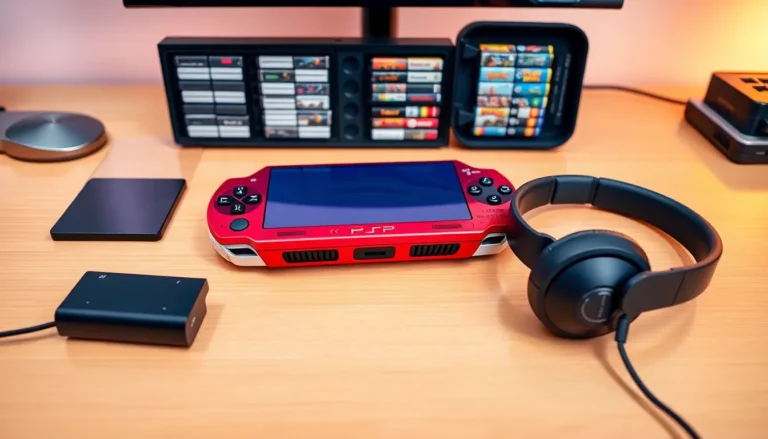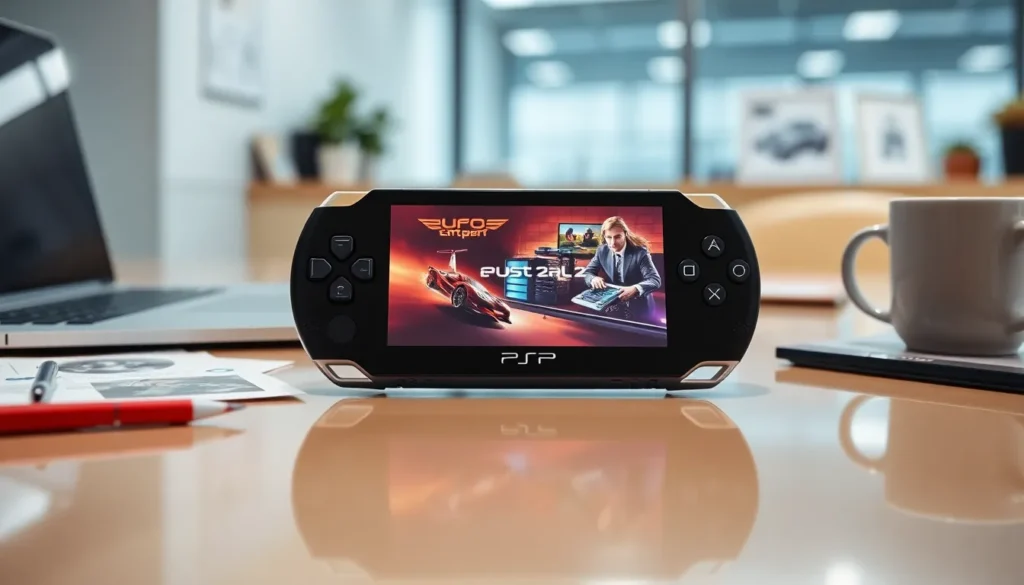Table of Contents
ToggleThe PlayStation Portable, or PSP as it’s affectionately known, revolutionized portable gaming when it burst onto the scene in 2004. Imagine the thrill of having a powerful gaming console tucked snugly in your bag, ready to unleash epic adventures at a moment’s notice. But how does this little miracle of technology actually work? Let’s jump into the mechanics behind the magic, peeling back the layers of this iconic device, and perhaps uncovering just how it managed to capture the hearts of gamers worldwide.
Overview Of The PlayStation Portable

The PlayStation Portable, developed by Sony Computer Entertainment, was designed to extend the PlayStation experience beyond the living room. Weighing in at a mere 280 grams, this handheld console provided a striking 4.3-inch LCD screen that showcased vibrant graphics. With a library of games spanning genres from action to puzzle, it served as a perfect platform for gamers on the go. Its introduction marked a pivotal moment in gaming history, blending the worlds of home console and portable entertainment.
In essence, the PSP delivered what many believed to be impossible: high-quality gaming in a convenient, transportable device.
Key Components Of The PlayStation Portable
Operating System And User Interface
At the heart of the PlayStation Portable lies its custom operating system, known as the PSP firmware. This OS is designed for smooth navigation, allowing players to access games, multimedia functions, and settings effortlessly. The interface is intuitive with a main menu that presents options like Games, Music, Video, and Internet.
Game Formats And Media
The PSP supports a variety of media formats, primarily utilizing Universal Media Disc (UMD) technology for games and movies. The UMD housed a tiny disc that provided sufficient space for rich content while being compact enough for handheld use. Also, digital downloads were enabled through the PlayStation Network, allowing access to a vast library directly without needing a physical disc.
Hardware Specifications
Beneath the sleek exterior, the PSP is powered by a MIPS R4000 CPU, clocked at an impressive 333 MHz. Coupled with 64 MB of RAM, it manages to run games smoothly while processing graphics via its built-in GPU. The device also features a battery that balances performance and longevity.
Battery Life And Power Management
The PSP’s battery management system is a crucial element in keeping gamers engaged for longer periods. With a rechargeable lithium-ion battery, the device allows for around 4 to 6 hours of gameplay on a full charge, depending on the game being played and the intensity of the graphics. Power-saving modes are employed to extend battery life further, including dimming the screen during inactivity or adjusting performance levels based on usage. Users can also keep an eye on their battery status via the interface, so running out of juice mid-battle is less of a concern.
Connectivity Features
Multimedia Capabilities
The PSP isn’t just a gaming powerhouse: it doubles as a multimedia device. Built-in functionality allows users to play music, watch videos, and view photos. Compatibility with various formats, including MP3 and MP4, enabled gamers to enjoy their multimedia content seamlessly. Also, memory sticks provide ample storage for users looking to expand their collection of tunes and videos.
Networking And Online Features
Unlike most handheld consoles at the time, the PSP offered Wi-Fi connectivity, allowing players to connect to the internet. This opened a world of online gameplay, competitive leaderboards, and even web browsing capabilities. Players could download updates, patches, and new game demos, ensuring they were always at the cutting edge of gaming.
Emulation And Homebrew Support
One of the most intriguing aspects of the PSP is its support for emulation and homebrew applications. Gamers have discovered ways to play classic titles from systems like the NES or Sega Genesis on their PSPs, expanding the library beyond official games. The homebrew community thrives on this device, providing tools, games, and enhanced features that enhance the user experience significantly. While these unofficial apps can sometimes risk voiding warranties, they highlight the passion and ingenuity of the gaming community.







